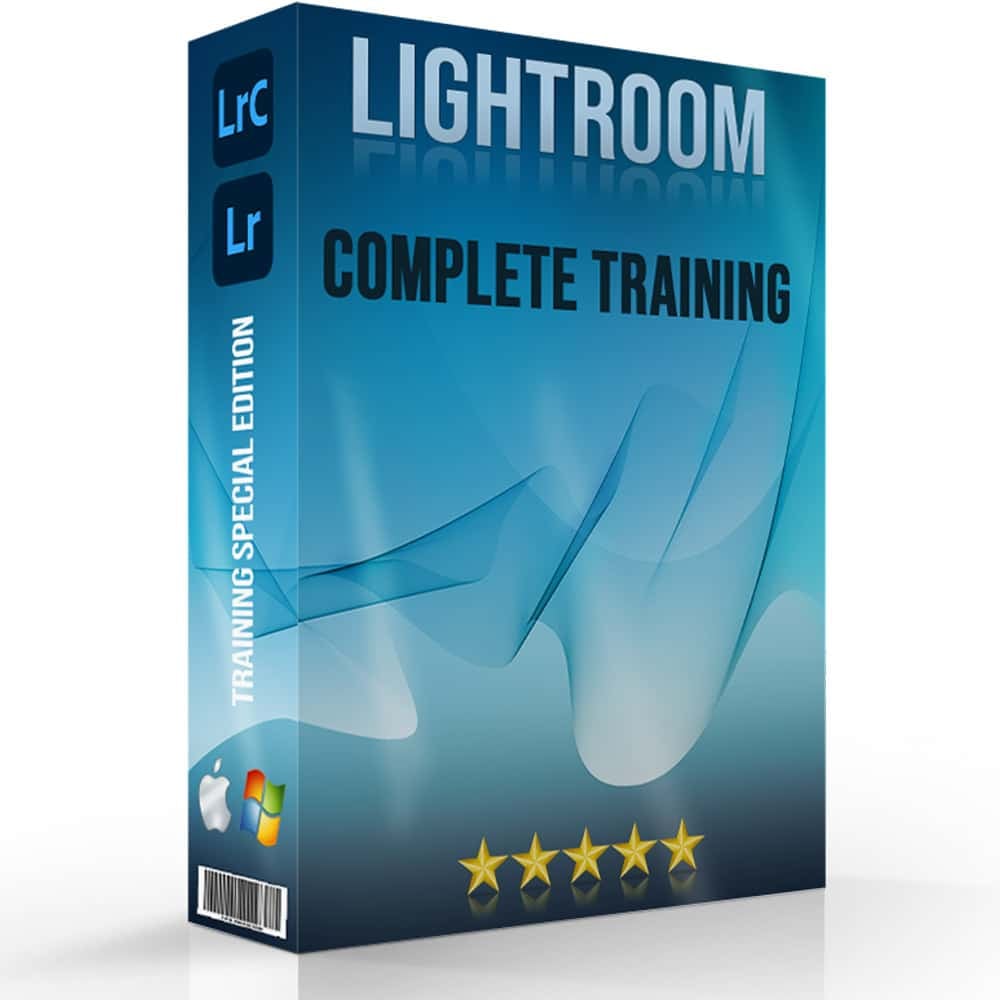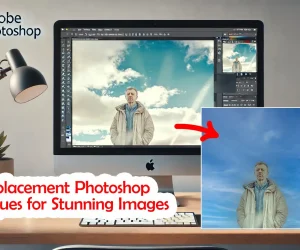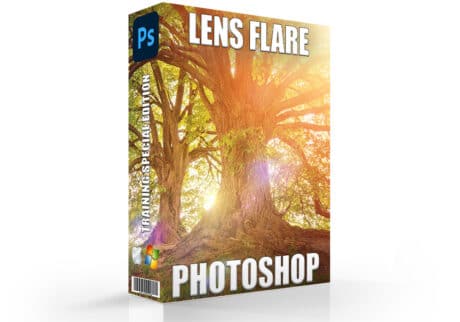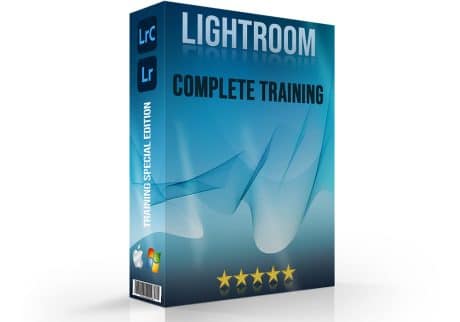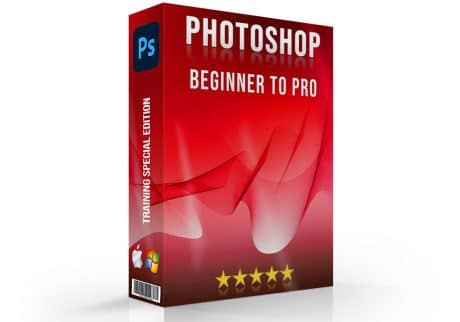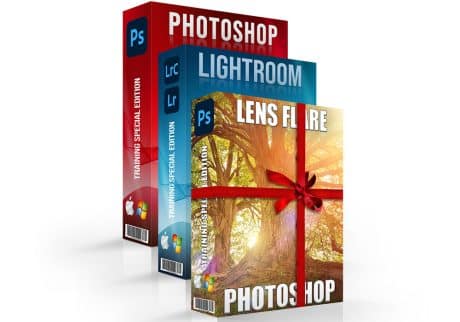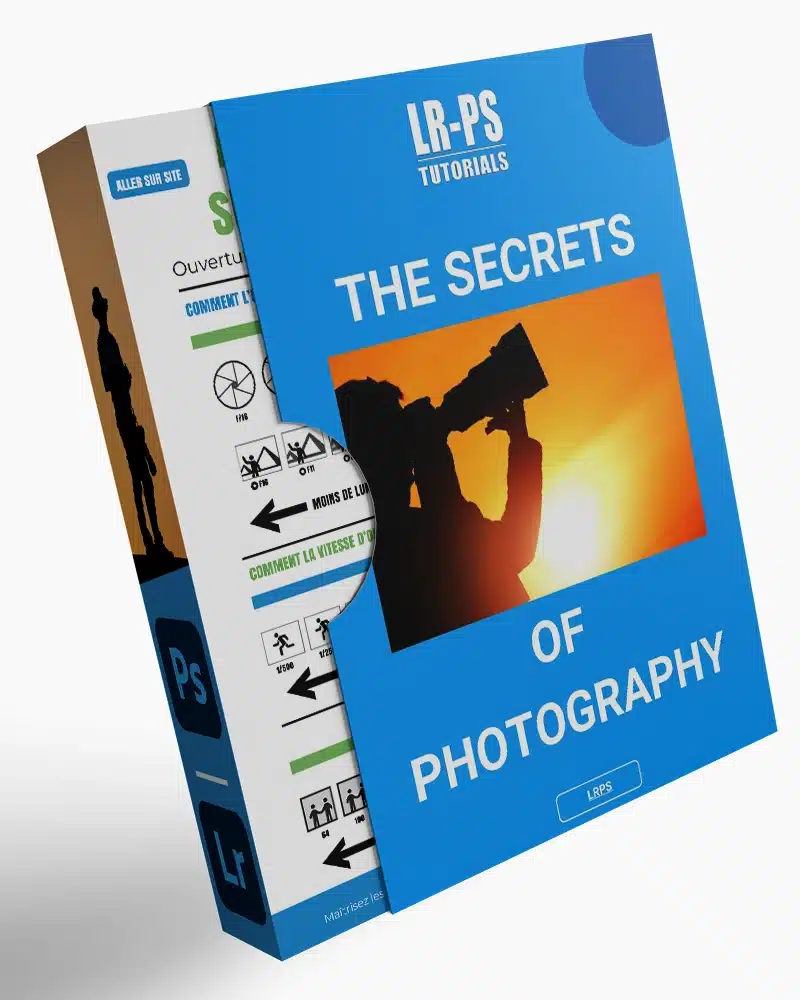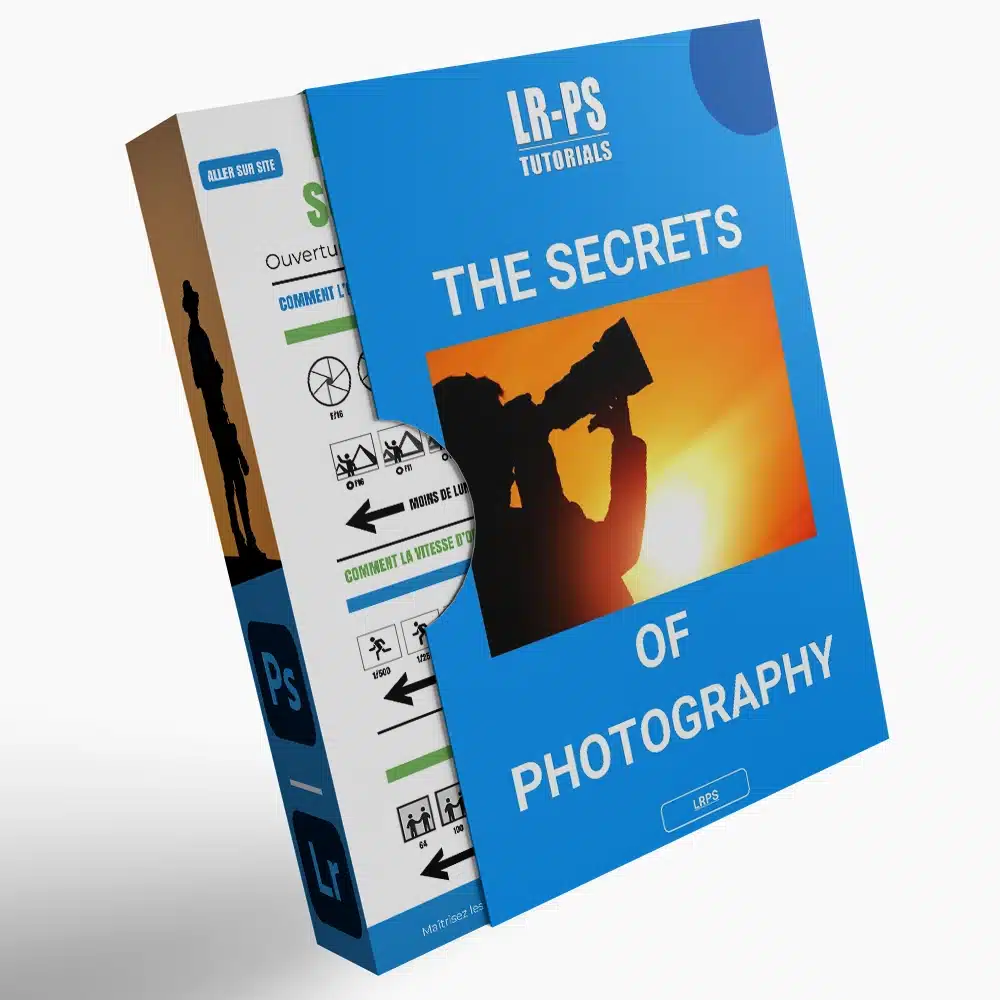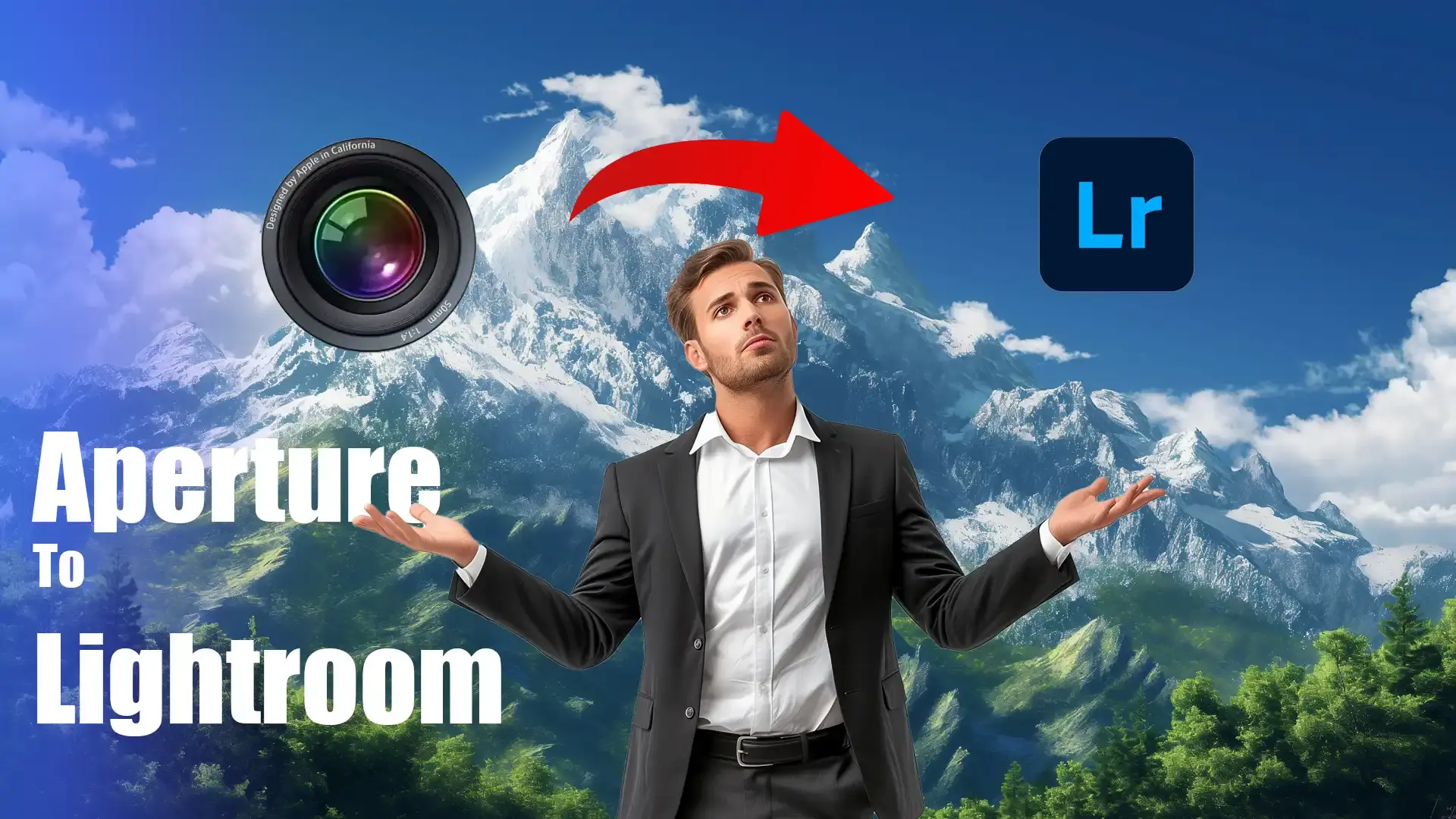
Switching from Aperture to Lightroom can feel like a daunting task, but it doesn’t have to be.
I’ve been there, grappling with the nuances and trying to make sense of it all. In this article, I’ll guide you through the transition, ensuring you feel confident and excited about the switch.
Imagine elevating your photo editing skills to new heights with streamlined workflows and powerful tools at your fingertips.
Stay with me, and by the end, you’ll be ready to harness the full potential of Lightroom, making your digital photography journey smoother and more rewarding.
Let’s dive in!
Table of Contents
Introduction to Aperture and Lightroom
Aperture and Lightroom are two software tools photographers use to edit and manage photos. Both platforms have distinct features suited for different needs.
This article breaks down what each tool is and why you might consider migrating from Aperture to Lightroom.
What is Aperture?
Aperture is a photo editing software developed by Apple. It lets users organize, edit, and manage apple photos.
Aperture libraries store the photos, allowing users to apply adjustments, manage metadata like IPTC metadata, and create smart albums.
Aperture adjustments make it easier for photographers to refine raw files and JPEG files. This tool also supports both managed files and referenced files, which helps in saving disk space.
What is Lightroom?
Lightroom is an Adobe software that provides powerful tools for editing and organizing photos. It includes features like Lightroom catalog, virtual copies, and supports raw and jpeg files as well as video files.
Lightroom Classic offers a non-destructive editing environment, allowing for raw file edits without altering the original file.
It includes smart collections and virtual copies for streamlined workflow management.
The Lightroom collection sets feature enables efficient bed storage without creating distinct libraries for every session.
Why Migrate from Aperture to Lightroom?
Many people are moving from Aperture to Lightroom due to various reasons:
- Aperture users find Lightroom to be more robust in handling large volumes of raw files.
- Adobe Lightroom offers better image adjustments and a more intuitive keyword hierarchy system for better file organization.
Aperture libraries can be seamlessly imported into Lightroom via the Lightroom import plug-in.
This feature simplifies the migration of your existing aperture libraries, including smart albums and IPTC metadata, into Lightroom with minimal effort.
Lightroom has superior metadata organization capabilities. This allows for efficient organization and tagging of photos.
The import button in Lightroom also eases the process of transferring photos from various sources, ensuring all your raw images and other file types are safely stored.
You don’t need to worry about disk space as Lightroom’s referenced files feature optimizes storage.
Pro Tip: Use Lightroom’s smart collections feature to automate the categorization of your photos based on specific criteria.
Preparing Your Aperture Library
To make a seamless transition from Aperture to Lightroom, it’s crucial to organize your photos efficiently.
Begin by ensuring your Aperture library is well-structured, as this will facilitate a smoother import into Lightroom.
Backing Up Your Aperture Library Before Transferring from Aperture to Lightroom
First, back up your existing Aperture collection. Use external hard drives or cloud services. This way, your valuable data is safe.
Next, open Aperture and navigate to the File menu. Select “Export” and “Library as New Library.” This creates a backup copy. You’ll avoid data loss during the transfer.
Remember to save your original file and raw files. Safeguarding these files helps recover any data you might accidentally overlook.
Pro Tip: Remember, different scenarios need different export settings. Check out, for instance, the best Lightroom export settings for Instagram or even how to export from Photoshop to Lightroom.
Steps to Back Up:
- Open Aperture.
- Navigate to the File menu.
- Select "Export" and then "Library as New Library."
- Save your original file and raw files.
Organizing Your Photos in Aperture
Start by organizing everything in neat groups.
For instance, Aperture project structure works great for grouping by events or themes.
Tips for Organizing:
- Consider using smart albums. These albums automatically update based on criteria you set, such as date or tag region. It’s a quick way to manage disk memory effectively.
- Utilize hue labels and naming tags. It makes identifying specific photos easier later in Lightroom.
- Include IPTC metadata and other metadata. This data helps categorize and find images quickly in Lightroom.
Always make sure you have complete metadata management before the actual transfer. Double-check that adjusted images have their edits saved within both Aperture and other software.
After ensuring your library is concise and organized, use the import plug-in for a smoother transfer. Follow the dialog box instructions carefully.
Pro Tip: Preparing your Aperture library involves methodical organization and careful backup. With these steps, your transition from Aperture to Lightroom will be smooth.
Use the import button in Lightroom to bring in all elements from your Aperture library effortlessly.
Exporting Photos from Aperture to Lightroom
To move your photos from Aperture to Lightroom, you need to export them first.
Choosing the Right Export Settings
When exporting from Aperture, you face choices. Select settings based on what you need for Lightroom:
- File Types: Decide if you want to export RAW files, JPEG files, or both. Keep in mind RAW files give more flexibility for future edits. JPEG files are lighter and save disk memory, but limit post-processing.
- Managed Files vs. Referenced Files: Managed files are stored within the Aperture library, while referenced files stay in their original location. Make sure to know which type you’re dealing with.
- File Naming: Choose clear names for easy identification. Utilize a keyword hierarchy if needed.
- IPTC Metadata: Include these in your exports, as they help categorize images more effectively in Lightroom.
Pro Tip: Choosing the right format is always important which is why you need to also learn the difference between JPEG and NEF and the difference between JPEG and CR2 formats.
Exporting Originals vs. Edited Versions
Deciding whether to export original files or adjusted images matters.
Here’s why:
- Originals: Exporting originals gives you a clean slate. This includes both JPEG and RAW files exactly as imported.
- Edited Versions: If you've made adjustments in Aperture, exporting edited versions keeps those edits. This is useful if you don’t want to re-edit in Lightroom.
- Master Files and Virtual Copies: Store master files safely. Create virtual copies in Lightroom to play with edits without altering the original image.
Now that you’ve chosen your settings and file types, make sure to organize and back up your exported files.
This is crucial for seamless integration into Lightroom.
Pro Tip: Oftentimes, unnoticed metadata like IPTC metadata enhances folder management and searchability in Lightroom.
Remember, Aperture users transferring to Lightroom should know that proper Aperture exposure adjustments and settings make all the difference.
For those looking to further refine their images, learning how to use the patch tool in Photoshop can be incredibly beneficial for removing unwanted elements.
Importing Photos into Lightroom Classic
Importing photos into Lightroom Classic involves selecting your source files and configuring import settings to ensure they are organized and tagged according to your preferences.
Setting Up Your Lightroom Catalog
Before you jump into transferring your photos from Aperture to Lightroom, let’s get the basics straight. First, you need a solid Lightroom photo catalog.
Why? Because that’s where all your photo edits and metadata live.
Creating a new catalog is simple. In Lightroom Classic, go to File > New Catalog. Pick a location and give your catalog a name. This keeps your work separate and organized. If you’re dealing with different projects, create separate libraries to avoid clutter.
Now, let’s make sure all your current photos are ready for the Lightroom import.
Importing Photos into Lightroom
Time to import those photos! Open Lightroom and head over to File > Import Photos and Video. You’ll see a dialog box.
Pick the source where your aperture library is stored. This can be an external drive or just your local storage, ensuring that Lightroom can access and integrate all the elements from your Aperture library smoothly.
In the dialog box, you’ll have options like Copy, Move, Add. Mostly, you’ll use ‘Copy’ to keep the files in their original location while adding them to Lightroom. Click on Select All or manually choose which images to import. Once done, hit ‘Import’.
If transitioning from Aperture, you might find the Aperture exposure adjustments a bit off in Lightroom. Spend a few minutes making those initial tweaks.
Use features like color labels and keyword hierarchy to organize effectively.
Remember that Lightroom not only accommodates photo files but video files as well. This could be useful if your aperture library contains mixed media.
Also, don’t forget to back up your Lightroom photo catalog regularly. It’s good practice to avoid any potential loss.
Pro Tip: Utilize Lightroom’s import plug-in for Aperture. It makes the whole process smoother and helps maintain your preset settings.
Always keep an eye on the dialog box for an organized workflow.
Organizing Your Photos in Lightroom
Organizing photos in Lightroom doesn’t have to be complicated. You’re now past the basics, and it’s time to step up your game.
Let’s dive into the essential steps for keeping your photo catalog neat and tidy.
Creating Collections and Folders
Start with collections. Collections in Lightroom work as virtual photo albums. They store pointers to your images but don’t move them. It’s like a playlist for your photos.
Do you know what that means?
It means you can make various collections without duplicating image files!
- Create a new collection for each project. Simply go to the Collections panel and hit the plus sign (+).
- Next, organize collections into Collection Sets. This step keeps related collections together.
- Use Smart Collections to automatically gather images based on criteria like ratings and keywords.
Folders, on the other hand, mirror your computer’s file structure. They help manage where your photos actually reside.
- Navigate to the Folder section and create a logical folder hierarchy that suits your workflow.
- Drag and drop images between folders directly within Lightroom.
This approach makes it easier to handle both Aperture and Lightroom data structures. It gives a seamless transition from one system to another.
No need to fuss over relocating files. Simple and effective.
Using Keywords and Metadata
Next up are keywords and metadata. These tools are our best friends for finding photos quickly. Keywords describe the content within each image.
- Create a keyword hierarchy to keep tags organized. Group keywords by themes or events.
- Select multiple photos and apply relevant keywords in one go.
Metadata includes details like camera settings, location, and copyright info. Well-managed metadata ensures each photo is easy to locate and reference.
- Update metadata fields in the Library module's Metadata panel.
- Use presets to speed up metadata entry by applying commonly used details.
Aperture users will appreciate the familiarity of these processes. Transform aperture libraries into useful keyword and metadata databases in Lightroom.
Plus, this beats the headache of manually searching through thousands of pictures. By mastering these tools, photo management becomes a breeze!
Pro Tip: Check out how to install Lightroom presets to make the process a breeze.
Utilizing Color Labels
Never underestimate the power of color labels. These visual markers act as signals for organizing your workflow.
Use them to indicate photo statuses or stages in your editing pipeline.
Keeping your Lightroom photo catalog organized might seem daunting initially. With Collections, Folders, Keywords, and Metadata, the process becomes manageable.
Smooth out those workflows and let your creativity flow freely!
And always remember, a well-organized setup saves time and prevents headaches down the line.
Understanding essential tools in Lightroom is key to make the most of your photo editing. When utilizing color labels in Lightroom, these tools can enhance your organization and workflow.
Making Aperture Adjustments in Lightroom
Making Aperture exposure adjustments in Lightroom can be a bit different, but it’s essential for fine-tuning your photo edits.
Once your Aperture library is imported, you’ll need to familiarize yourself with Lightroom’s tools and settings to effectively replicate and enhance your previous adjustments.
Replicating Aperture Edits in Lightroom
Transitioning from Aperture to Lightroom may feel daunting, but it’s doable! When I first moved my aperture libraries over, I focused on understanding how Lightroom handles edits.
Remember, Lightroom prides itself on its non-destructive editing. This means any adjustments you make won’t alter the raw file itself-easy to undo or tweak later.
Start by importing your images into Lightroom using the import plug-in. Look for the “import plug-in” option while adding files designated for Aperture transfer. This ensures metadata and edits carry over smoothly.
When editing, the Develop module becomes your best friend. It allows for detailed tweaks with features like ‘Exposure’, ‘Contrast’, and more.
Trying to replicate an Aperture look?
Slide the “Exposure” and “Contrast” slightly up or down.
Compare results with Aperture’s edits side-by-side using virtual copies.
Pro Tip: Check out these Lightroom editing tips for a better skillset.
Using Lightroom's Advanced Editing Tools
Lightroom excels with its advanced editing tools. You have options like:
- Graduated Filter
- Radial Filter
- Adjustment Brush
Get comfortable using these for nuanced local adjustments that resemble Aperture’s capabilities.
Graduated filters work well for darkening skies. Radial filters can highlight subjects without affecting the background.
Adjustment brushes let you edit specific areas.
To organize, use Lightroom collection sets. Creating smart collections automatically groups similar photos, mirroring the smart collections feature in Aperture.
Managing your Aperture project structure becomes second nature.
Using aperture priority mode helps you control depth of field for stunning shots. Combine this with advanced editing tools in Lightroom to refine your images further.
Pro Tip: Before making major edits, create a ‘virtual copy’ of your image. This preserves the original and lets you experiment freely.
For even more efficiency, familiarize yourself with essential Lightroom shortcuts to speed up your workflow.
Aperture to Lightroom Advanced Techniques
Advanced techniques for photo editing in Lightroom can help you achieve professional results.
After migrating your Aperture library, explore Lightroom’s advanced features, such as custom presets and detailed color grading, to elevate your images and make the most of your new editing environment.
Understanding the aperture in photography is crucial for mastering advanced techniques.
By leveraging aperture settings, you can enhance your photo quality and control depth of field.
Using Lightroom Plugins
Understanding and incorporating plugins in Lightroom can significantly enhance your editing workflow.
Plugins add functions that Lightroom doesn’t natively have, allowing for increased versatility and productivity.
Pro Tip: Check out the best plugins for Lightroom.
Steps to Use Plugins:
- Identify the required plug-ins to address specific needs, such as noise reduction or color correction.
- Always download and install from reputable sources to ensure compatibility and safety.
- After installation, go to the "Plugin Manager" in the Lightroom menu to enable it.
This step streamlines your workflow, making advanced techniques more accessible.
Advanced Editing in Lightroom Classic
Advanced editing in Lightroom Classic comprises non-destructive edits, meaning your RAW file stays intact.
Use the Develop module for in-depth adjustments like exposure, color balance, and lens corrections.
Pro Tip: If needed, check out how to use lens correction in Lightroom.
Tips for Advanced Editing:
- To make bulk adjustments, use synchronization tools. Select multiple photos and apply identical edits. This tip ensures consistency across related shots.
- Consider using masks for localized adjustments. They allow for targeted editing in specific areas without affecting the entire image.
Pro Tip: Check out how to batch edit in Lightroom for an even easier workflow.
Creating Custom Presets
Presets in Lightroom save a collection of settings, allowing for quick application to multiple images.
Begin by editing a photo to your desired look.
Steps to Create Custom Presets:
- Once satisfied, click on "Create Preset" under the Develop module.
- Name the preset and choose specific adjustments to save.
- Apply your custom presets across various photos in your library, enhancing efficiency and maintaining visual coherence.
This method also speeds up future edits.
Pro Tip: Regularly back up your Lightroom photo catalog to avoid losing valuable edits and keep your workspace efficient.
Aperture to Lightroom Post-Migration Tips
Post-migration tips ensure a smooth transition, helping you fine-tune your new Lightroom setup and optimize your workflow after moving from Aperture.
Organizing Your Lightroom Catalog
After successfully migrating your images from Aperture to Lightroom, organizing your catalog becomes crucial.
Create Folders
Start by creating folders that reflect your original Aperture project structure. This step helps maintain familiarity and makes locating images easier.
Use Collections
Utilize collections to group images. They work like albums in Aperture but offer more flexibility. Consider making smart collections of your best photos.
Tag Your Images
Continue using keywords and tags. They transferred from Aperture, but regular upkeep will ensure everything remains organized.
Backup Regularly
Just like in Aperture, back up your catalog. Use external drives or cloud services to safeguard your work.
Recreating Aperture Adjustments in Lightroom
Recreating adjustments made in Aperture might feel overwhelming initially.
Compare Images
Place the Aperture exposure adjustments side-by-side with the new Lightroom imports. Use reference view to see both adjustments in one screen.
Use Lightroom’s Tools
Lightroom’s adjustment tools differ from Aperture but offer similar functionality. Familiarize yourself with basic edits like exposure, contrast, and color adjustments.
Copy Settings
If adjustments are similar across many images, use the “Copy Settings” feature to apply the same edits to multiple files swiftly.
Common Issues and Troubleshooting While Migrating from Aperture to Lightroom
Common issues and troubleshooting steps can help resolve migration challenges.
| Issue | Aperture | Lightroom | Troubleshooting Steps |
|---|---|---|---|
| Missing Photos | Check file path and structure | Click exclamation mark, re-link photos | Ensure file path hasn’t changed; use search field to locate misplaced files |
| Metadata Discrepancies | Metadata tags sometimes don’t sync correctly | Check import settings and tags | Use a compatible import plug-in; verify metadata transfer and use third-party apps if needed |
| Performance Issues | Sluggish with large collections | May slow down with high-res files | Optimize catalogs, adjust cache settings, close unnecessary applications, use smart previews |
Missing Photos
The first issue you might face is missing photos. It’s frustrating, but here’s how to fix it:
- Make sure the file path hasn't changed. Go to the Library module, and click on the exclamation mark beside the missing photo. A dialog box appears, allowing you to locate the photo.
- If you're working with a lot of adjusted images, it's easy to lose track of master files. Keeping a consistent file structure helps. If you imported from an aperture library, check if the files designated for import are still in their original folder.
- Use the search field. Enter keywords related to your photo like "aperture project structure," you might find misplaced or hidden files.
Metadata Discrepancies
Metadata discrepancies can be a headache, especially when dealing with both applications, Aperture and Lightroom. You import your photos, but other metadata doesn’t sync correctly.
Here’s what you can do:
- Ensure you use an import plug-in that's compatible with both systems.
- Look for issues with metadata tags like the tag region. Sometimes other metadata like capture time or location fails to transfer properly. Check your import settings. Click on the dialog box during import, and make sure all the checkboxes are correct.
- If metadata is still off, consider using third-party apps to align it. Keep your metadata clean and consistent. This step proves invaluable when creating web galleries or sharing images.
Performance Issues
Performance issues slow down your workflow. Lightroom can get sluggish, especially with large aperture collection or raw files.
To optimize performance:
- Periodically optimize your quality catalogs. Make sure you're not running the Aperture Photos app simultaneously.
- Adjust the cache settings within Lightroom. Increase the cache size if you work with high-res images. Remove unnecessary background applications to free up resources.
- Use smart previews. These reduce the load on your system, allowing you to work efficiently without losing image quality.
- To handle PSD files, save versions you no longer edit in lower resolutions. Helps a lot.
When moving from Aperture to Lightroom, it’s important to manage PSD files effectively.
PSD files, which store all your Photoshop layers and adjustments, need to be imported into Lightroom to retain their full functionality.
Ensure all PSD files from Aperture are properly brought into Lightroom to continue editing seamlessly. This will help you maintain the integrity of your work and streamline your transition.
Pro Tip: Check out different methods, such as how to blur the background in Lightroom, in case you run into any trouble.
Frequently Asked Questions (FAQs)
How do I migrate from Aperture to Lightroom?
- Step 1: Start by ensuring both Aperture and Lightroom are installed on your computer.
- Step 2: In Lightroom, go to the File menu, select 'Plug-in Extras', and then choose 'Import from Aperture Library'.
- Step 3: Follow the on-screen prompts to select the Aperture library you want to migrate.
- Step 4: Review the import settings, adjust as necessary, and begin the migration process.
How do I add aperture in Lightroom?
- Note: To adjust aperture settings in Lightroom, you must be working with a RAW file that contains aperture data.
- Step 1: In the Develop module, locate the 'Basic' panel.
- Step 2: Under the 'Basic' panel, you can adjust the exposure settings which indirectly affect how the aperture is rendered in your final image.
- Important: Remember, direct aperture exposure adjustments are not possible in Lightroom as it is primarily a post-processing software.
Can you shoot straight to Lightroom?
- Step 1: Connect your camera to your computer using a suitable USB cable.
- Step 2: In Lightroom, go to the File menu, select 'Tethered Capture', and then 'Start Tethered Capture'.
- Step 3: Configure your tethered capture settings and start shooting directly into Lightroom.
How to do 300 dpi in Lightroom?
- Step 1: In Lightroom, open the image you wish to adjust.
- Step 2: Navigate to the 'File' menu and select 'Export'.
- Step 3: In the export settings, look for 'Resolution' under the 'Image Sizing' options.
- Step 4: Set the resolution to 300 pixels per inch for a 300 dpi output.
- Step 5: Choose your other export settings as required and export the image.
Conclusion
Transitioning from Aperture to Lightroom can be smooth and straightforward with the right approach. From my experience, starting with a well-organized Aperture library and carefully importing your PSD files into Lightroom makes a big difference.
Remember to adjust your settings and explore new features to make the most of Lightroom’s capabilities.
If you’re looking to dive deeper into photo editing, check out my Photoshop course and Lightroom course.
For Adobe software, you can explore Photoshop and Lightroom directly.
These resources will help you get the most out of your new photo editing setup.
Happy editing!
Read more about Photoshop:

